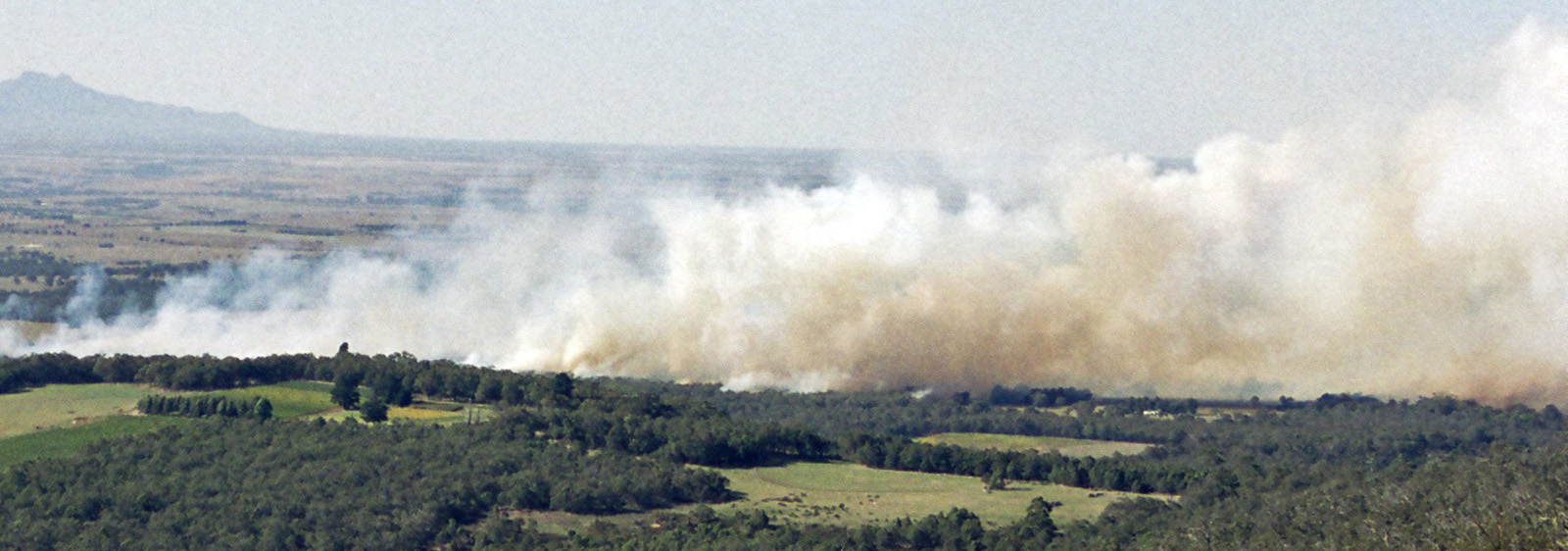
Climate change is not just an environmental challenge: its socioeconomic impacts are profound and far-reaching, touching every aspect of society. From agriculture to health, from urban infrastructure to coastal communities, the effects of climate change are evident and escalating.
The far-reaching effects
In agriculture, rising temperatures, more intense and frequent heatwaves and changing precipitation patterns pose significant threats to food security.1, 2 Crop yields decline as extreme weather events become more frequent and unpredictable, leading to increased food prices and economic instability. Smallholder farmers, who often lack the resources to adapt, are particularly vulnerable, exacerbating rural poverty and food insecurity.3
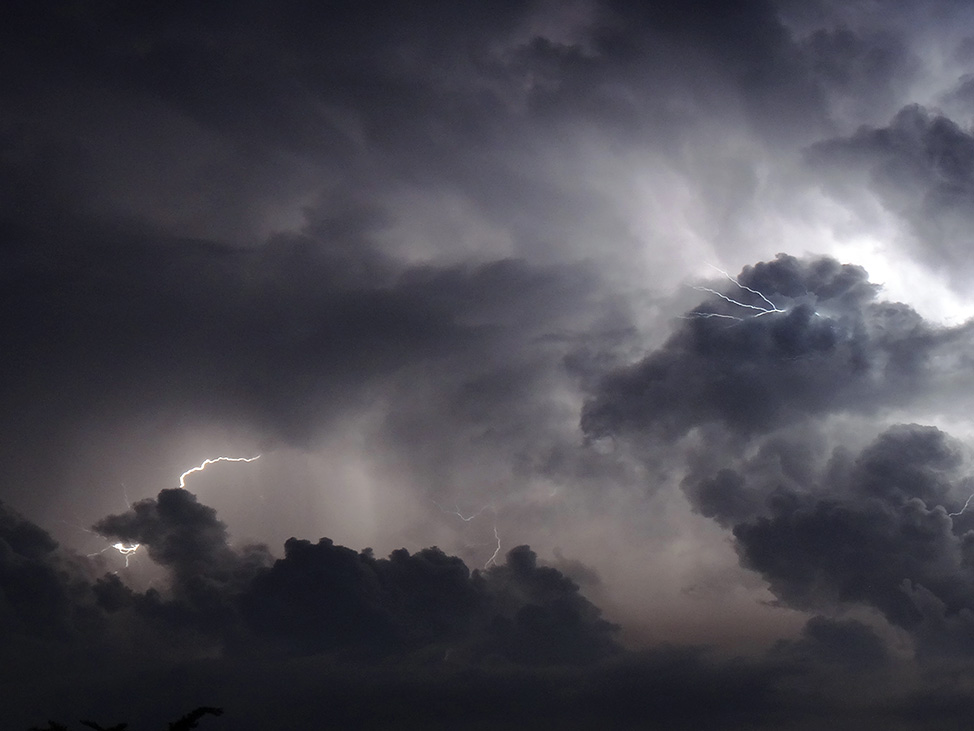 Coastal communities face the dual threats of sea-level rise and more intense storms.4 Erosion and inundation damage homes, infrastructure and livelihoods, displacing populations and disrupting local economies. The loss of coastal ecosystems further compounds these challenges, reducing natural defences against storm surges and exacerbating the impacts of climate-related disasters.
Coastal communities face the dual threats of sea-level rise and more intense storms.4 Erosion and inundation damage homes, infrastructure and livelihoods, displacing populations and disrupting local economies. The loss of coastal ecosystems further compounds these challenges, reducing natural defences against storm surges and exacerbating the impacts of climate-related disasters.
Health systems strain under the burden of climate-change-induced heatwaves, air pollution and the spread of vector-borne diseases.5, 6 Heat-related illnesses increase as temperatures rise, particularly affecting vulnerable populations such as the elderly and outdoor workers. Air pollution exacerbates respiratory conditions, leading to higher healthcare costs and decreased productivity. Vector-borne diseases, such as malaria and dengue fever, expand into new regions, placing additional strain on already overburdened health systems.
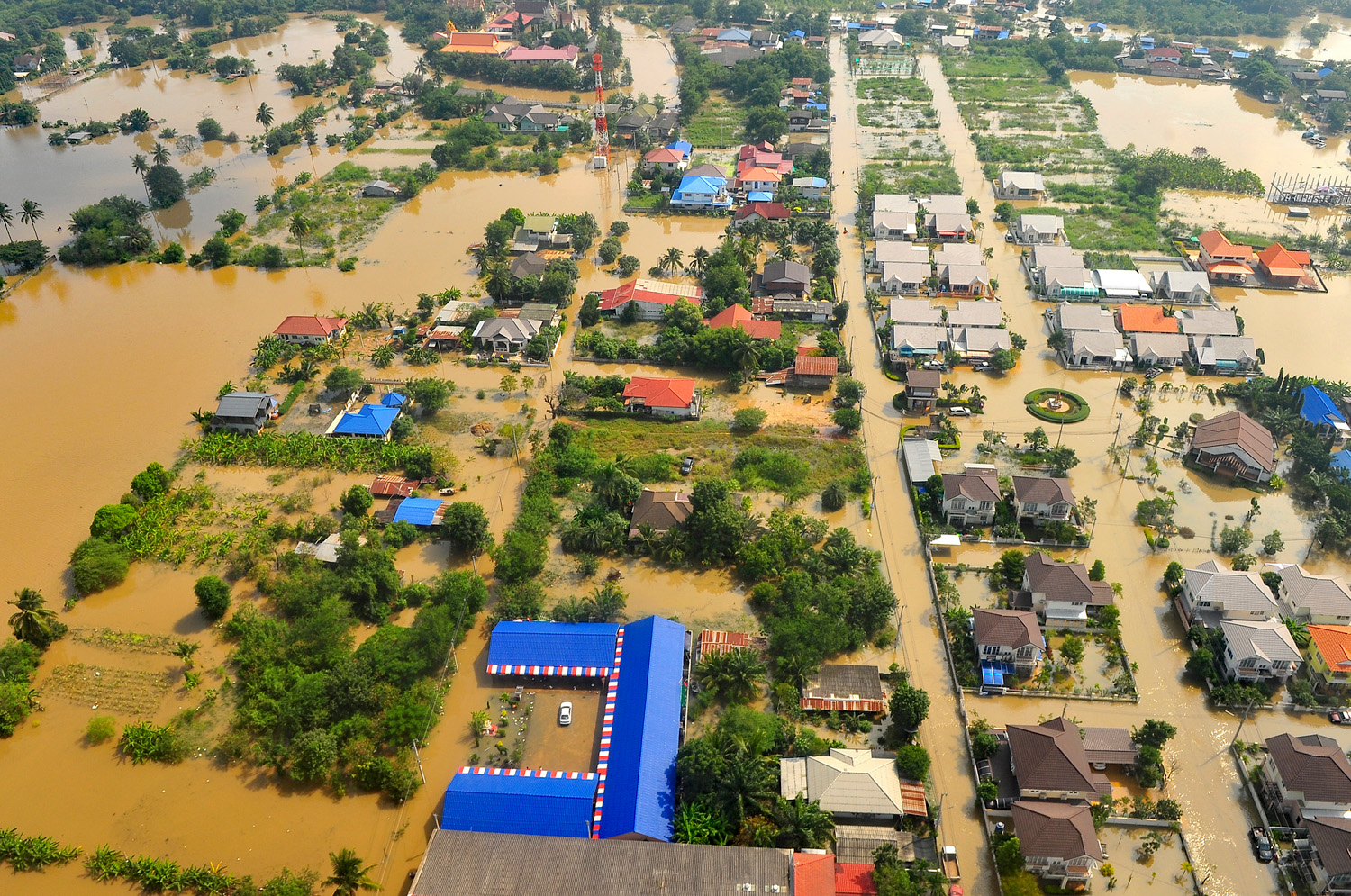 Displacement due to climate-related disasters amplifies social inequalities and challenges urban planning and infrastructure.7 Vulnerable communities, often located in low-lying areas or informal settlements, bear the brunt of climate impacts, facing the loss of homes, livelihoods and community cohesion. Inadequate housing and infrastructure increase the risks associated with extreme weather events, perpetuating cycles of poverty and vulnerability.
Displacement due to climate-related disasters amplifies social inequalities and challenges urban planning and infrastructure.7 Vulnerable communities, often located in low-lying areas or informal settlements, bear the brunt of climate impacts, facing the loss of homes, livelihoods and community cohesion. Inadequate housing and infrastructure increase the risks associated with extreme weather events, perpetuating cycles of poverty and vulnerability.
Furthermore, climate change exacerbates existing socioeconomic disparities, disproportionately affecting marginalised and vulnerable populations. Indigenous communities, women, children and people living in poverty are often the hardest hit, lacking access to resources, information, and adaptive capacity.8
Policy responses
Addressing the socioeconomic impacts of climate change requires co-ordinated action across sectors and scales. Policy interventions, such as investment in climate-resilient infrastructure and the promotion of sustainable agriculture practices, are essential for building resilience and reducing vulnerability. Community-led initiatives that prioritise local knowledge and empower marginalised groups are also critical for fostering adaptive capacity and promoting social equity.
To address these challenges, projects like CROSSEU, the new €5 million Horizon Europe project (that I have the pleasure to be part of), play a crucial role in enhancing our understanding of these impacts and developing actionable strategies for resilience and adaptation. One of the key contributions of CROSSEU lies in its development of a Decision Support System (DSS) that integrates tools, measures, and policy options to address these risks in a cross-sectoral and cross-regional perspective. This DSS will support (and hopefully improve) decision-making processes at various levels, from local to EU-wide, and facilitate the adoption of evidence-based policies and measures to enhance resilience and mitigate the impacts of climate change.
Would you like to know more about CROSSEU? Follow our journey and be informed of our publications and events in our new webpage: https://crosseu.eu/9
Articles/References
- Global food security under climate change
Proceedings of the National Academy of Sciences, Josef Schmidhuber and Francesco N Tubiello (11/12/2007)
- Reducing risks to food security from climate change
Global Food Security, Bruce M Campbell et al. (2016: 11, pp 34–43)
- The value-add of tailored seasonal forecast information for industry decision making
Climate, Clare Mary Goodess et al (16/10/2022)
- Assessing climate change impacts, sea level rise and storm surge risk in port cities: a case study on Copenhagen
Climatic change, Stéphane Hallegatte, Nicola Ranger, Olivier Mestre, Patrice Dumas, Jan Corfee-Morlot, Celine Herweijer and Robert Muir Wood (7/12/2010)
- Health risks of climate change: An assessment of uncertainties and its implications for adaptation policies
Environmental Health, J Arjan Wardekker, Arie de Jong, Leendert van Bree, Wim C Turkenburg and Jeroen P van der Sluijs (19/9/2012)
- Climate Change and Temperature-related Mortality: Implications for Health-related Climate Policy
Biomedical and Environmental Sciences, Tong Shi Lu, Jorn Olsen and Patrick L Kinney (2021: 34(5) pp 379–86 )
- Climate Change, Inequality, and Human Migration
IZA Discussion Paper No. 12623, Michał Burzyński, Christoph Deuster, Frédéric Docquier and Jaime de Melo (23/9/2019)
- The trap of climate change-induced “natural” disasters and inequality
Global Environmental Change, Federica Cappelli, Valeria Costantini and Davide Consoli (30/7/2021)
- Cross-sectoral Framework for Socio-Economic Resilience to Climate Change and Extreme Events in Europe
UEA Research Project, Nicholas Vasilakos, Katie Jenkins and Rachel Warren
Questions
- How do the socioeconomic impacts of climate change differ between rural and urban communities? What factors contribute to these disparities, and how can policies address them effectively?
- In what ways do vulnerable populations, such as indigenous communities and those living in poverty, bear the brunt of climate change impacts? How can we ensure that climate adaptation strategies prioritise their needs and promote social equity?
- The blog mentions the importance of community-led initiatives in building resilience to climate change. What examples of successful community-based adaptation projects can you identify, and what lessons can be learned from their implementation?
- How can governments and organisations collaborate to address the socioeconomic impacts of climate change while also promoting economic growth and development? What role do cross-sectoral partnerships play in building resilience and fostering sustainable practices?
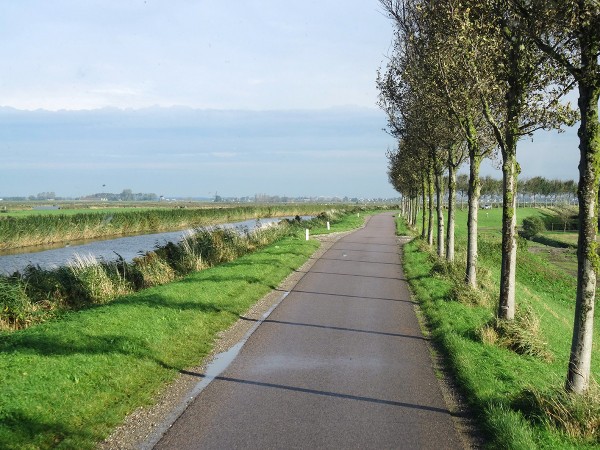 Much of the east coast of England is subject to tidal flooding. One such area is the coastline around the Wash, the huge bay between Norfolk and Lincolnshire. Most of the vulnerable shorelines are protected by sea defences, usually in the form of concrete walls or earth embankments, traditionally paid for by the government. But part of the Norfolk shoreline is protected by shingle banks, which require annual maintenance.
Much of the east coast of England is subject to tidal flooding. One such area is the coastline around the Wash, the huge bay between Norfolk and Lincolnshire. Most of the vulnerable shorelines are protected by sea defences, usually in the form of concrete walls or earth embankments, traditionally paid for by the government. But part of the Norfolk shoreline is protected by shingle banks, which require annual maintenance.
Full government funding for maintaining these banks ended in 2013. According to new government rules, only projects that provide at least £8 of benefits for each £1 spent would qualify for such funding to continue. The area under question on the Norfolk cost of the Wash does not qualify.
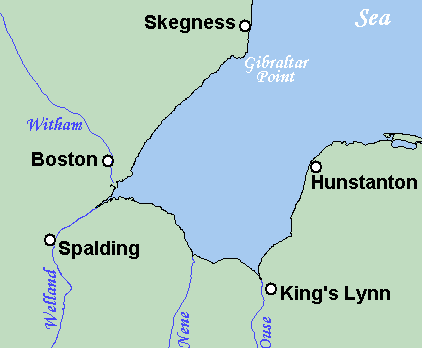
Between 2013 and 2015 the work on the shingle banks is being paid for by the local council charging levies. After that, the plan is for a partnership-funding approach, where the government will make a (small) contribution as long as the bulk of the funding comes from the local community. This will involve setting up a ‘community interest company’, which will seek voluntary contributions from local residents, landowners and businesses.
Sea defences are a public good, in that it is difficult to exclude people benefiting who choose not to pay. In other words, there is a ‘free rider’ problem. However, in the case of the Wash shoreline in question, one borough councillor, Brian Long, argues that it might be possible to maintain the flood defences to protect those who do contribute while ignoring those who do not.
Not surprisingly, many residents and businesses argue that the government ought to fund the defences and, if it does have to be financed locally, then everyone should be required to pay their fair share.
Radio podcast
 Holding back the sea BBC Radio 4, David Shukman (19/11/14)
Holding back the sea BBC Radio 4, David Shukman (19/11/14)
Articles
What is the price of holding back the sea? BBC News, David Shukman (19/11/14)
Firms will have to pay towards cost of sea defences between Heacham and Wolferton in West Norfolk EDP24, Chris Bishop (1/8/14)
Businesses between Snettisham and Hunstanton will have to pay for flood defences. EDP24, Chris Bishop (19/11/14)
Wash and west Norfolk sea defence repairs now under way BBC News (13/12/13)
Consultation document
Managing our coastline Borough Council of King’s Lynn and West Norfolk, Environment Agency
Questions
- What are the two main features of a public good? Are sea defences a pure public good?
- Is there a moral hazard if people choose to live in a coastal area that would be subject to flooding without sea defences?
- Who is the ‘public’ in the case of sea defences? Is it the whole country, or the local authority or just all those being protected by the defences?
- What are the problems with relying on voluntary contributions to fund, or partly fund, sea defences? How could the free-rider problem be minimised in such a funding model?
- Discuss the possible interpretations of ‘equity’ when funding sea defences.
- If ‘flood defences could be built or maintained to protect those who do contribute while ignoring those who do not’, does this mean that such defences are not a public good?
- Find out how sea defences are funded in The Netherlands. Should such a funding model be adopted in the UK?
 Britain has faced some its worst ever weather, with thousands of homes flooded once again, though the total number of flooded households has fallen compared to previous floods. However, for many households, it is just more of the same – if you’ve been flooded once, you’re likely to be flooded again and hence insurance against flooding is essential. But, if you’re an insurance company, do you really want to provide cover to a house that you can almost guarantee will flood?
Britain has faced some its worst ever weather, with thousands of homes flooded once again, though the total number of flooded households has fallen compared to previous floods. However, for many households, it is just more of the same – if you’ve been flooded once, you’re likely to be flooded again and hence insurance against flooding is essential. But, if you’re an insurance company, do you really want to provide cover to a house that you can almost guarantee will flood?
The government has pledged thousands to help households and businesses recover from the damage left by the floods and David Cameron’s latest step has been to urge insurance companies to deal with claims for flood damage as fast as possible. He has not, however, said anything regarding ‘premium holidays’ for flood victims.
The problem is that the premium you are charged depends on many factors and one key aspect is the likelihood of making a claim. The more likely the claim, the higher the premium. If a household has previous experience of flooding, the insurance company will know that there is a greater likelihood of flooding occurring again and thus the premium will be increased to reflect this greater risk. There have been concerns that some particularly vulnerable home-owners will be unable to find or afford home insurance.
The key thing with insurance is that in order for it to be provided privately, certain conditions must hold. The probability of the event occurring must be less than 1 – insurance companies will not insure against certainty. The probability of the event must be known on aggregate to allow insurance companies to calculate premiums. Probabilities must be independent – if one person makes a claim, it should not increase the likelihood of others making claims.
Finally, there should be no adverse selection or moral hazard, both of which derive from asymmetric information. The former occurs where the person taking out the insurance can hide information from the company (i.e. that they are a bad risk) and the latter occurs when the person taking out insurance changes their behaviour once they are insured. Only if these conditions hold or there are easy solutions will the private market provide insurance.
On the demand-side, consumers must be willing to pay for insurance, which provides them with protection against certain contingencies: in this case against the cost of flood damage. Given the choice, rational consumers will only take out an insurance policy if they believe that the value they get from the certainty of knowing they are covered exceeds the cost of paying the insurance premium. However, if the private market fails to offer insurance, because of failures on the supply-side, there will be major gaps in coverage.
Furthermore, even if insurance policies are offered to those at most risk of flooding, the premiums charged by the insurance companies must be high enough to cover the cost of flood damage. For some homeowners, these premiums may be unaffordable, again leading to gaps in coverage.
Perhaps here there is a growing role for the government and we have seen proposals for a government-backed flood insurance scheme for high-risk properties due to start in 2015. However, a loop hole may mean that wealthy homeowners pay a levy for it, but are not able to benefit from the cheaper premiums, as they are deemed to be able to afford higher premiums. This could see many homes in the Somerset Levels being left out of this scheme, despite households being underwater for months. There is also a further role for government here and that is more investment in flood defences. If that occurs though, where will the money come from? The following articles consider flooding and the problem of insurance.
Articles
 Insurers urged to process flood claims quickly BBC News (17/2/14)
Insurers urged to process flood claims quickly BBC News (17/2/14)
Flood area defences put on hold by government funding cuts The Guardian, Damian Carrington and Rajeev Syal (17/2/14)
Flooding: 200,000 houses at risk of being uninsurable The Telegraph (31/1/12)
Govt flood insurance plan ‘will not work’ Sky News (14/2/14)
Have we learned our lessons on flooding? BBC News, Roger Harrabin (14/2/14)
ABI refuses to renew statement of principles for flood insurance Insurance Age, Emmanuel Kenning (31/1/12)
Wealthy will have to pay more for flood insurance but won’t be covered because their houses are too expensive Mail Online, James Chapman (7/2/14)
Buyers need ‘flood ratings’ on all houses, Aviva Chief warns The Telegraph, James Quinn (15/2/14)
Wealthy homeowners won’t be helped by flood insurance scheme The Telegraph(11/2/14)
Costly insurance ‘will create flood-risk ghettos and £4.3tn fall in house values’ The Guardian, Patrick Wintour (12/2/14)
Leashold homes face flood insurance risk Financial Times, Alistair Gray (10/2/14)
Questions
- Consider the market for insurance against flood damage. Are risks less than one? Explain your answer.
- Explain whether or not the risk of flooding is independent.
- Are the problems of moral hazard and adverse selection relevant in the case of home insurance against flood damage?
- To what extent is the proposed government-backed flood insurance an equitable scheme? Should the government be stepping in to provide insurance itself?
- Should there be greater regulation when houses are sold to provide better information about the risk of flooding?
- Why if the concept of opportunity cost relevant here?
- How might household values be affected by recent floods, in light of the issues with insurance?
 Next year a government agreement with insurance companies is set to end. This agreement requires insurance companies to provide cover for homes at a high risk of flooding.
Next year a government agreement with insurance companies is set to end. This agreement requires insurance companies to provide cover for homes at a high risk of flooding.
However, in June 2013, this agreement will no longer be in place and this has led to mounting concerns that it will leave thousands of home-owners with the inability either to find or afford home insurance.
The key thing with insurance is that in order for it to be provided privately, certain conditions must hold. The probability of the event occurring must be less than 1 – insurance companies will not insure against certainty. The probability of the event must be known on aggregate to allow insurance companies to calculate premiums. Probabilities must be independent – if one person makes a claim, it should not increase the likelihood of others making claims.
Finally, there should be no adverse selection or moral hazard, both of which derive from asymmetric information. The former occurs where the person taking out the insurance can hide information from the company (i.e. that they are a bad risk) and the latter occurs when the person taking out insurance changes their behaviour once they are insured. Only if these conditions hold or there are easy solutions will the private market provide insurance.
On the demand-side, consumers must be willing to pay for insurance, which provides them with protection against certain contingencies: in this case against the cost of flood damage. Given the choice, rational consumers will only take out an insurance policy if they believe that the value they get from the certainty of knowing they are covered exceeds the cost of paying the insurance premium. However, if the private market fails to offer insurance, because of failures on the supply-side, there will be major gaps in coverage.
Furthermore, even if insurance policies are offered to those at most risk of flooding, the premiums charged by the insurance companies must be high enough to cover the cost of flood damage. For some homeowners, these premiums may be unaffordable, again leading to gaps in coverage.
In light of the agreement coming to an end next year, there is pressure on the government firstly to ensure that insurance cover is available to everyone at affordable prices and secondly to continue to build up flood defences in the most affected areas. Not an easy task given the budget cuts. The following articles provide some of the coverage of the problems of insuring against flood damage.
Articles
200,000 homes ‘at flooding risk’ BBC News (3/1/12)
MPs slam government flood defences Post Online, Chris Wheal (31/1/12)
Flooding: 200,000 houses at risk of being uninsurable The Telegraph (31/1/12)
Flood defences hit by government cuts ‘mismatch’, says MP Guardian, Damian Carrington (31/1/12)
Fears over cash for flood defences The Press Association (31/1/12)
ABI refuses to renew statement of principles for flood insurance Insurance Age, Emmanuel Kenning (31/1/12)
Questions
- Consider the market for insurance against flood damage. Are risks less than one? Explain your answer
- Explain whether or not the risk of flooding is independent.
- Are the problems of moral hazard and adverse selection relevant in the case of home insurance against flood damage?
- If ABI doesn’t put in place another agreement to provide insurance to homeowners at most risk of flooding, what could be the adverse economic consequences?
- Is there an argument for the government stepping in to provide insurance itself?
- Explain why insurance premiums are so much higher for those at most risk of flooding. Is it equitable?
No-one in the UK can have failed to notice the seemingly never-ending torrent of wind and rain that has swept the country over the past couple of weeks. At the moment, there are 19 flood warnings in the UK and a further 58 areas are on flood watch, according to the Environmental Agency. Cockermouth in Cumbria has been the worse hit, with 12.4 inches of rain falling in just 24 hours, 6 bridges collapsing and over 200 people being rescued by emergency services, some having to break through their roof to get out. Thousands of people have been evacuated; PC Bill Barker lost his life trying to save others; and fears remain for a 21-year old women, who was washed away from a bridge. This has led to a safety review of all 1800 bridges in Cumbria.
Thousands of people have lost their homes and belongings and over 1000 claims to insurance companies have already been made. Flood victims are facing rapidly rising costs, as insurance premiums increase to cover the costs of flooding and this has led to these houses becoming increasingly difficult to sell. Some home-owners are even being forced to pay mandatory flood insurance. Without this in place, insurance companies are not willing to insure homeowners in some areas, or the premiums they’re charging are simply unaffordable. After all, if one household in an area hit by flooding claims for flood damage, the probability of all other houses in that area also claiming is pretty high, if not an almost certainty.
Care packages are arriving for those hit by the floods, as food is starting to run out, and estimates of the costs of flooding have already reached ‘tens of millions of pounds’. Gordon Brown has pledged £1 million to help the affected areas, but who knows where this money will come from; Barclays has also pledged help for the small businesses affected.
An independent inquiry needs to be launched into the causes of this flooding and whether better flood protection should have been in place. However, the extent of the flooding experienced is argued to only happen every 300 years, so is the cost of flood protection really worth the benefits it will bring? A number of issues have arisen from this freak weather, and some are considered in the articles below.
Residents returning to Cockermouth after flooding (including video) BBC News (23/11/09)
Insurers will be hit by £100 million flood bill City AM, Lora Coventry (23/11/09)
£100 million bill after Cumbria floods nightmare Metro, Kirststeen Patterson (23/11/09)
Floods claim in Cumbria could and Scotland could top £100 million (including video) BBC news (22/11/09)
Riverside residents, others may be forced to buy mandatory flood insurance The Times, Illinois, Steve Stout (21/11/09)
Funds for flooding victims set up BBC News (22/11/09)
Flood victims suffer as insurance costs rise Guardian, Jamie Elliott (8/11/09)
1 in 6 house insurance customers at risk of flooding UIA (20/11/09)
Papers focus on flood shortages BBC News (23/11/09)
Questions
- Why are insurance premiums high for flood protection and how will this affect house sales in the affected areas?
- Are the risks of flooding independent?
- Apart from those living in the areas hit by floods, who else will suffer from the flooding and how?
- The flooding experienced is said to be a phenomenon experienced every 300 years. Should better flood defences be put into place to stop the same thing happening in the future or should we use the necessary money elsewhere?
- What are the private and external costs and benefits of increased flood defences? What would a cost–benefit analysis need to establish in order for a decision to be made over whether more defences should be put in place?
- Millions of pounds will be needed to repair the damage caused by the flooding. Where will this money come from? Think about the opportunity cost.
- What do you think will be the likely impact on environmental policy and how will this affect you?

 Coastal communities face the dual threats of sea-level rise and more intense storms.4 Erosion and inundation damage homes, infrastructure and livelihoods, displacing populations and disrupting local economies. The loss of coastal ecosystems further compounds these challenges, reducing natural defences against storm surges and exacerbating the impacts of climate-related disasters.
Coastal communities face the dual threats of sea-level rise and more intense storms.4 Erosion and inundation damage homes, infrastructure and livelihoods, displacing populations and disrupting local economies. The loss of coastal ecosystems further compounds these challenges, reducing natural defences against storm surges and exacerbating the impacts of climate-related disasters. Displacement due to climate-related disasters amplifies social inequalities and challenges urban planning and infrastructure.7 Vulnerable communities, often located in low-lying areas or informal settlements, bear the brunt of climate impacts, facing the loss of homes, livelihoods and community cohesion. Inadequate housing and infrastructure increase the risks associated with extreme weather events, perpetuating cycles of poverty and vulnerability.
Displacement due to climate-related disasters amplifies social inequalities and challenges urban planning and infrastructure.7 Vulnerable communities, often located in low-lying areas or informal settlements, bear the brunt of climate impacts, facing the loss of homes, livelihoods and community cohesion. Inadequate housing and infrastructure increase the risks associated with extreme weather events, perpetuating cycles of poverty and vulnerability.


